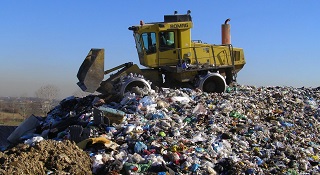From Guest Blogger Brooke Chaplan: Green Waste Technology – Three Alternatives to Messy Landfills

In cities such as San Francisco and Seattle, curbside recycling efforts make it more convenient and less messy for citizens to dispose of organic waste such as leftover food and kitchen scraps. That said, organic waste from homes and restaurants currently make up an estimated 30 percent of our garbage output.
However, for “deep-green” cities such as those mentioned above, curbside recycling of food scraps where leftovers get shipped to industrial composting facilities, can process up to 300 tons of organic waste daily. The method is quite simple: put the organic waste in a separate container for pickup alongside the regular bin used for recycling plastics. While only 3 percent of the 30 million tons of waste produced in the U.S. ever gets recycled, the idea is catching on in other countries other than the U.S. Already in operation for a number of years, Toronto lays claim to the world’s largest organic recycling program.
The Bio-Tech Alternative
With 26 percent of the U.S. landfills scheduled to close within the next three years, many communities are looking for technological solutions to deal with the ever-increasing waste management problem. One such sector, bio-tech, offers means to deal with landfill waste or incineration pollution.
Some companies, such Uzelac Industries, stand on the forefront of cutting-edge means to deal with waste: converting waste into ash–without incineration. Through Uzelac’s innovative BMS technology, landfill costs get reduced by 90 percent. Furthermore, it’s a totally green delivery solution for lowering the carbon footprint of the planet.
The Reusable Recycling Alternative
We are all familiar with the Styrofoam packaging that comes with breakable items, and know what a mess it can make. Unfortunately, breaking down Styrofoam material is not an option. However, some companies such as Prime Cellars, have come up with ways to simply reuse the hard, solid material. Encouraging wine clubs to return the Styrofoam wrappings from their bottled wines to the wine distributor may not be impressive, but it does help keep Styrofoam from our landfill mountains.
As seen above, these three methods of reducing and even avoiding landfills by different means of waste management, do in fact work. They are also cost-effective, clean, and help reduce the carbon footprint on this planet. Joining all three methods, along with other possible waste reduction solutions, can do much to help eliminate unsightly and unsanitary landfills from our landscape.
